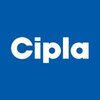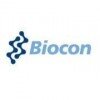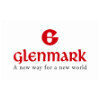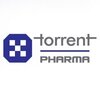Filter interviews by
Indian Pharma Company Interview Questions and Answers
Indian Pharma Company Interview Experiences
5 interviews found
I applied via Company Website
Interview Questionnaire
13 Questions
- Q1. principle of HPLC
- Ans.
HPLC is a technique used in quality control to separate, identify, and quantify components in a mixture.
HPLC stands for High-Performance Liquid Chromatography.
It is based on the principle of separating components of a mixture using a liquid mobile phase and a solid stationary phase.
The separation is achieved by the differential interaction of the components with the stationary phase.
The components are detected and quan...
- Q2. Principle GC
- Q3. What is spectroscopy
- Ans.
Spectroscopy is the study of the interaction between matter and electromagnetic radiation.
It involves the measurement of the absorption, emission, or scattering of electromagnetic radiation by a sample.
It is used in various fields such as chemistry, physics, astronomy, and biology.
Examples include UV-Vis spectroscopy, infrared spectroscopy, and nuclear magnetic resonance spectroscopy.
It can be used for qualitative and ...
- Q4. What is pH and it's range
- Ans.
pH is a measure of acidity or alkalinity of a solution on a scale of 0-14.
pH stands for 'potential of hydrogen'
A pH of 7 is neutral, below 7 is acidic, and above 7 is alkaline
The pH scale is logarithmic, meaning each whole number change represents a tenfold change in acidity or alkalinity
Examples of pH values: lemon juice (2.0), vinegar (2.5), water (7.0), baking soda (8.5), ammonia (11.5)
- Q5. What is normality
- Ans.
Normality refers to the concentration of a solution in terms of the number of equivalents of solute per liter of solution.
Normality is a measure of concentration used in chemistry.
It is defined as the number of equivalents of solute per liter of solution.
It is different from molarity, which is the number of moles of solute per liter of solution.
For example, a 1N solution of hydrochloric acid contains 1 equivalent of HC...
- Q6. What is molarity
- Ans.
Molarity is a measure of the concentration of a solution expressed as the number of moles of solute per liter of solution.
Molarity is calculated by dividing the number of moles of solute by the volume of the solution in liters.
It is denoted by the symbol 'M'.
Molarity is commonly used in chemistry to express the concentration of a solution.
For example, a 1 M solution of sodium chloride contains 1 mole of sodium chloride
- Q7. What is solution, solvent,solute
- Ans.
Solution, solvent, and solute are terms used in chemistry to describe the components of a homogeneous mixture.
A solution is a homogeneous mixture composed of a solvent and one or more solutes.
The solvent is the substance that dissolves the solute(s) to form the solution.
The solute is the substance that is dissolved in the solvent to form the solution.
For example, in a saltwater solution, water is the solvent and salt i
- Q8. Titration types
- Q9. What is acid and base
- Ans.
Acid and base are two types of chemical substances with opposite properties.
Acids are substances that donate hydrogen ions (H+) in a solution.
Bases are substances that accept hydrogen ions (H+) in a solution.
Acids have a pH value less than 7, while bases have a pH value greater than 7.
The reaction between an acid and a base is called neutralization, which results in the formation of salt and water.
Examples of acids inc...
- Q10. Which of strong/week acid base
- Ans.
Strong acids and bases dissociate completely in water, while weak acids and bases only partially dissociate.
Strong acids: HCl, HNO3, H2SO4
Strong bases: NaOH, KOH, Ca(OH)2
Weak acids: acetic acid, carbonic acid
Weak bases: ammonia, pyridine
- Q11. What is end point
- Ans.
End point refers to the point at which a process or reaction is considered complete.
It is the final stage of a process or reaction
It is the point at which a desired outcome is achieved
In quality control, it is the point at which a product meets the required specifications
Examples include the endpoint of a titration, the endpoint of a chemical reaction, and the endpoint of a manufacturing process
- Q12. Principle of UV
- Ans.
UV principle is based on the absorption of light by molecules and atoms, leading to electronic transitions.
UV radiation causes electronic transitions in molecules and atoms
The energy absorbed by the molecule or atom is proportional to the wavelength of the UV radiation
UV spectroscopy is used to identify functional groups in organic molecules
UV radiation is also used for sterilization and disinfection purposes
- Q13. Principle of Raman spectroscopy
- Ans.
Raman spectroscopy is a technique used to study vibrational, rotational, and other low-frequency modes in a system.
It involves the use of a laser to excite the molecules in a sample, causing them to vibrate and emit light at different wavelengths.
The resulting spectrum can be used to identify the chemical composition of the sample and study its molecular structure.
Raman spectroscopy is commonly used in materials scienc...
Interview Preparation Tips
Skills evaluated in this interview
Top Indian Pharma Company Quality Controller Interview Questions and Answers
Quality Controller Interview Questions asked at other Companies
Interview Questionnaire
3 Questions
- Q1. Difene your self
- Q2. Why you are join this organization
- Q3. What do you know about this organization
Interview Preparation Tips
Market Executive Interview Questions asked at other Companies
I applied via Naukri.com and was interviewed before Jan 2020. There was 1 interview round.
Interview Questionnaire
1 Question
- Q1. Job pharma company
Interview Preparation Tips
R&D Chemist Interview Questions asked at other Companies
I applied via Walk-in and was interviewed before Oct 2020. There was 1 interview round.
Interview Questionnaire
9 Questions
- Q1. For freshers their subjects. For experienced previous company's work experience.
- Q2. Machine knowledge and trouble shooting experience.
- Q3. Document knowledge.
- Q4. Update the new rules in the organization.
- Ans.
New rules have been implemented in the organization.
The new rules focus on improving workplace safety.
Employees are required to attend mandatory safety training sessions.
There are stricter guidelines for handling hazardous materials.
The dress code policy has been updated to reflect a more professional image.
All employees must sign a document acknowledging they have read and understand the new rules.
- Q5. Believe yourself.
- Q6. Manpower handling
- Q7. Keep your self updated.
- Q8. Learn new things about your field
- Q9. Don't be afraid of the interview process.
Interview Preparation Tips
Manufacturing Executive Interview Questions asked at other Companies
Indian Pharma Company interview questions for popular designations
I appeared for an interview in Aug 2020.
Interview Questionnaire
1 Question
- Q1. Question related to manufacturing process
Interview Preparation Tips
Top trending discussions






Interview questions from similar companies

Interview Questionnaire
2 Questions
- Q1. Why do we hire you?
- Q2. Why you wish to change?

Interview Questionnaire
1 Question
- Q1. How to do sales
- Ans.
Sales is the process of identifying potential customers, understanding their needs, and persuading them to purchase a product or service.
Identify potential customers through market research and lead generation
Understand the needs and pain points of customers by asking probing questions and active listening
Present the product or service in a compelling way, highlighting its features and benefits
Address any objections or...

Interview Questionnaire
1 Question
- Q1. Questions on excel, six Sigma.

I applied via Recruitment Consultant and was interviewed in May 2020. There were 6 interview rounds.
Interview Questionnaire
1 Question
- Q1. C# fundamental, delegates and it's type, generics, Io etc
Interview Preparation Tips
Total five round interview
1-system test
2-technical first round
3- technical second round
4-inteview with client Means product owner
5-HR

I applied via Referral and was interviewed before Sep 2021. There were 2 interview rounds.

They are asking aptitude related questions and total 15 to 20 questions
Interview Preparation Tips
Indian Pharma Company Interview FAQs
Tell us how to improve this page.
Indian Pharma Company Interviews By Designations
- Indian Pharma Company R&D Chemist Interview Questions
- Indian Pharma Company Quality Controller Interview Questions
- Indian Pharma Company Industrial Pharmacist Interview Questions
- Indian Pharma Company Market Executive Interview Questions
- Indian Pharma Company Manufacturing Executive Interview Questions
Interview Questions for Popular Designations
Interview Questions from Similar Companies
Indian Pharma Company Reviews and Ratings
based on 10 reviews
Rating in categories
|
Medical Representative
3
salaries
| ₹1.8 L/yr - ₹3.1 L/yr |
|
Medical Advisor
3
salaries
| ₹12.3 L/yr - ₹22 L/yr |

Wipro

IQVIA

Sun Pharmaceutical Industries

Aurobindo Pharma
- Home >
- Interviews >
- Indian Pharma Company Interview Questions











